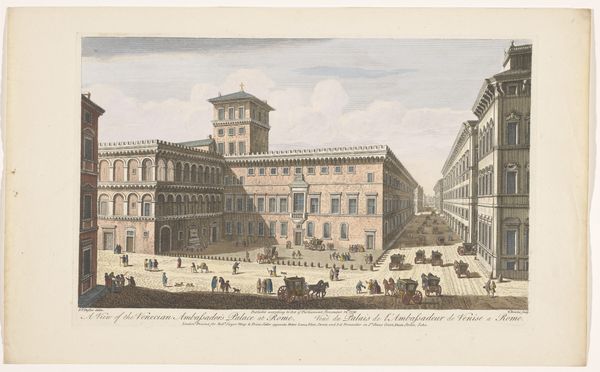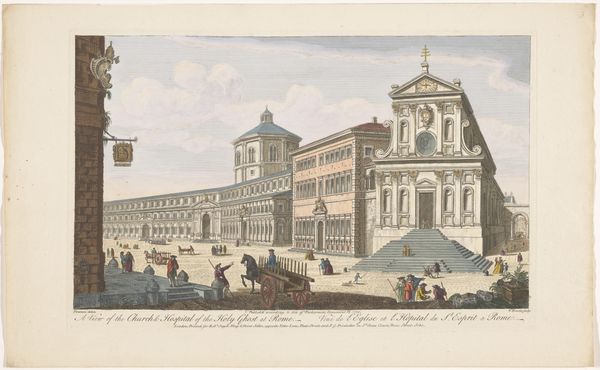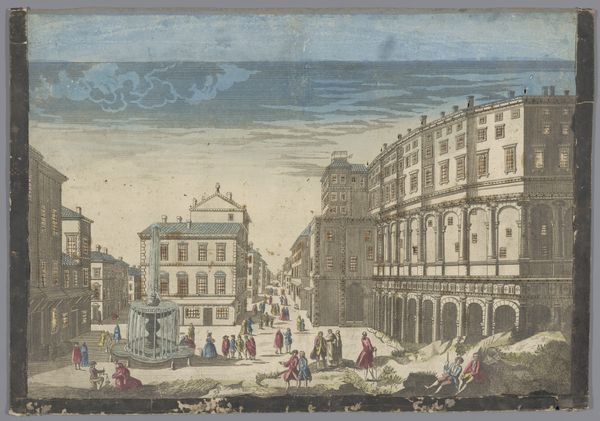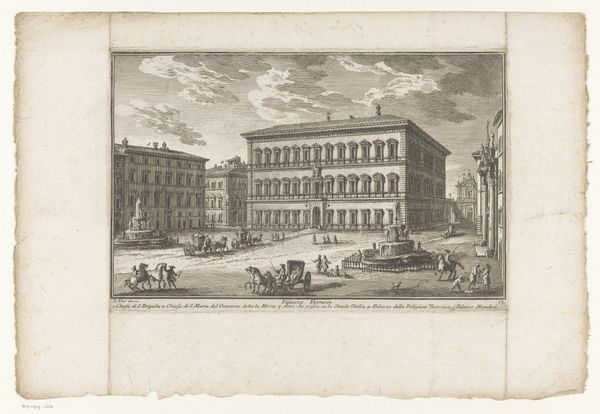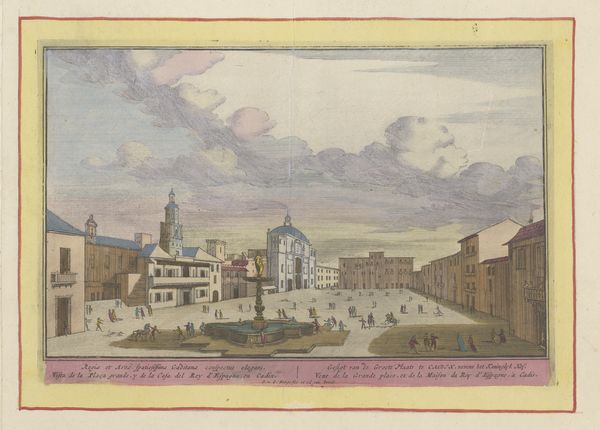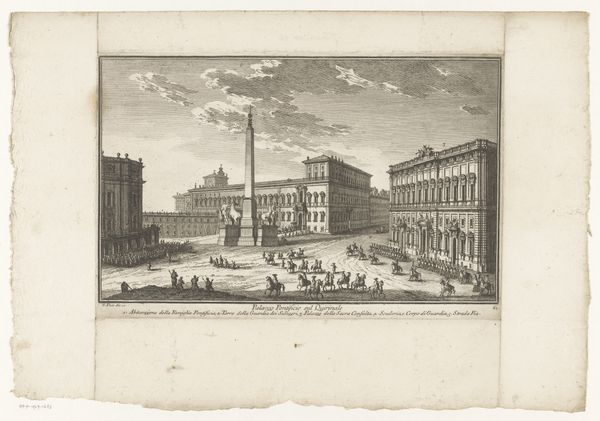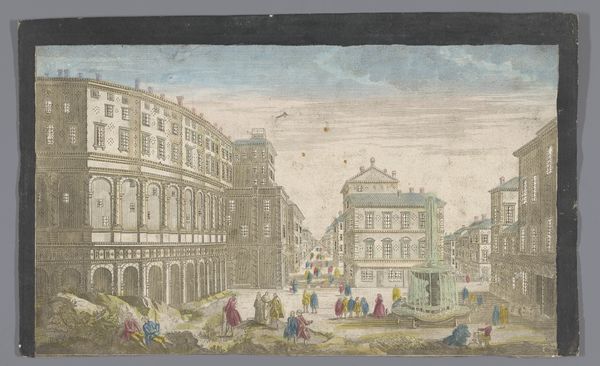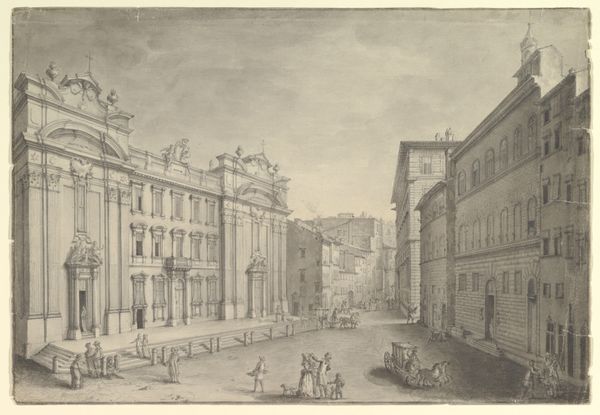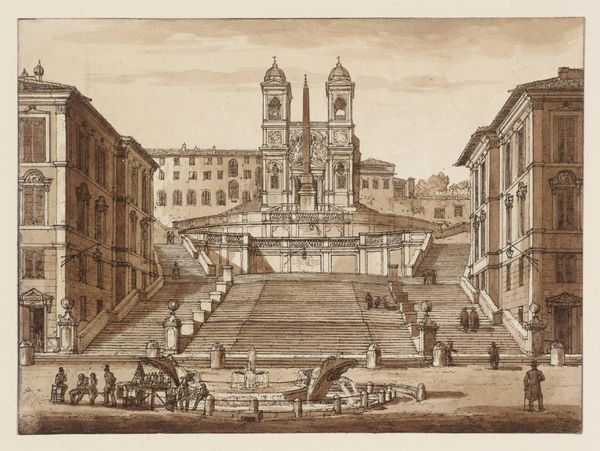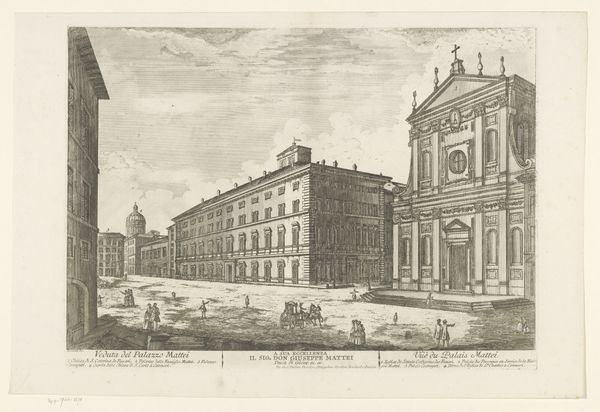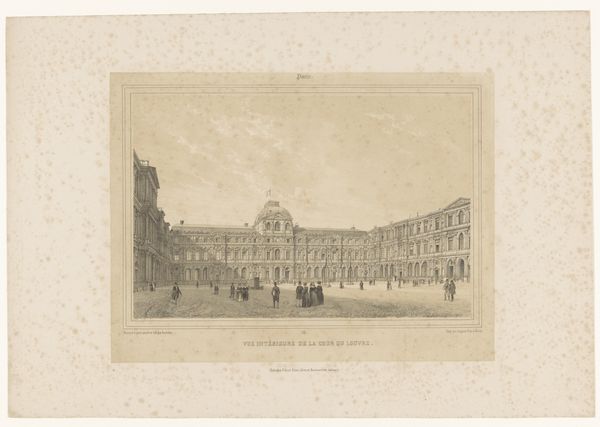
Gezicht op de Piazza di San Giovanni in Laterano te Rome 1755 - 1779
0:00
0:00
kaiserlichfranziskischeakademie
Rijksmuseum
drawing, coloured-pencil, print, etching, pen
#
drawing
#
neoclacissism
#
coloured-pencil
# print
#
etching
#
perspective
#
coloured pencil
#
pen
#
cityscape
#
academic-art
#
watercolor
#
realism
Dimensions: height 286 mm, width 448 mm
Copyright: Rijks Museum: Open Domain
Editor: This is "View of the Piazza di San Giovanni in Laterano in Rome," made between 1755 and 1779. It's attributed to the Kaiserlich Franziskische Akademie, using pen, colored pencil, etching, and other techniques on paper. I'm really struck by the formal, almost staged, feeling of the scene, but I’m curious, what do you see in this piece? Curator: Well, beyond the aesthetic, the choice of subject is highly significant. By depicting such a prominent religious site in Rome, particularly the Lateran Basilica, the artist and the Akademie are making a clear statement about the importance of the Church and its influence on the urban landscape and societal values of the time. Editor: So, it's not just a pretty picture of Rome; it's about power, too. Curator: Precisely. And consider the almost scientific approach to perspective. This insistence on order and clarity mirrors the Enlightenment ideals and Neoclassical art movement's preference for reason and classical themes over the perceived excesses of the Baroque. This type of precise documentation of architectural landmarks served a purpose: solidifying Rome's historical and cultural importance, not just for locals but for an international audience. Editor: I see that now. It's interesting how the artistic style reinforces the cultural message. The detailed rendering must have taken considerable time and resources. Who do you think this print would have appealed to? Curator: Wealthy European travelers on the Grand Tour seeking souvenirs, aspiring architects who sought models of classical buildings, and the clerical hierarchy eager to display symbols of the Vatican’s power. These kinds of artworks provided symbolic status and authority. Editor: I never thought about how political cityscapes could be, I’ll remember to consider the social and political messages behind even the prettiest pictures! Curator: Exactly, understanding art means situating it within a broader framework of socio-cultural and institutional forces.
Comments
No comments
Be the first to comment and join the conversation on the ultimate creative platform.
